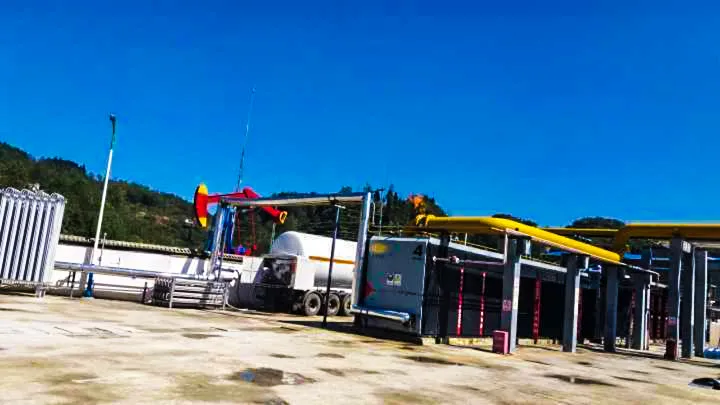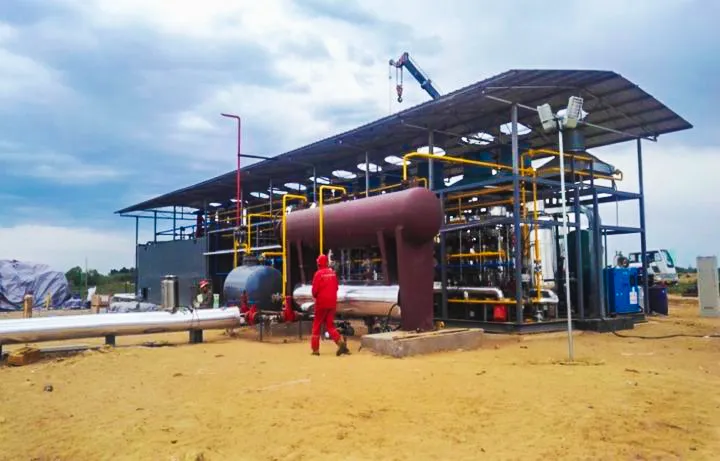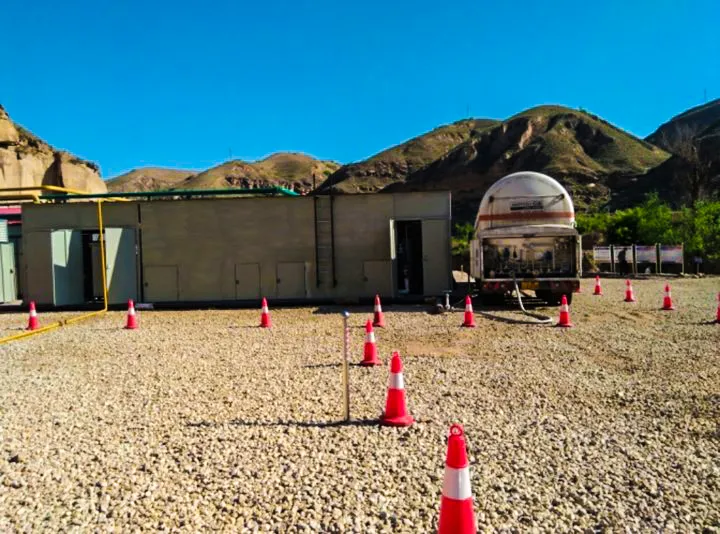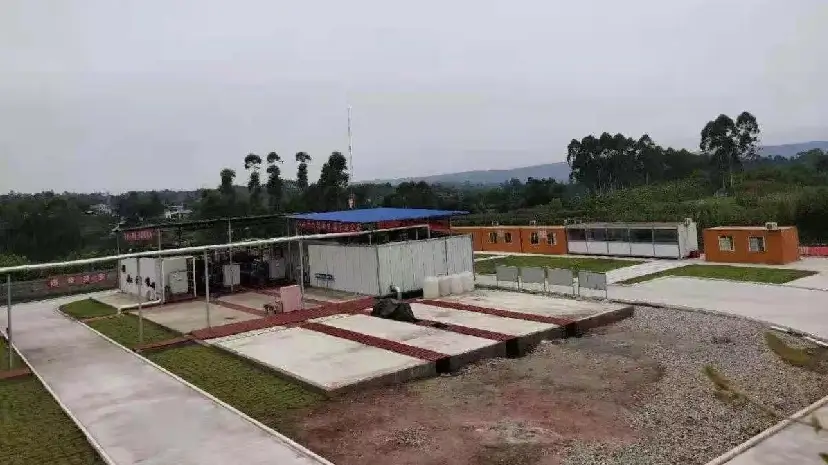What is Flare Gas?
Introduction to Flare Gas
Flare Gas refers to a mixture of gases that are released from equipment during industrial production processes and are transported to a specialized combustion system (flare system) to be burned.

Reasons for Flare Gas Generation in Industrial Processes
The generation of flare gas stems from the dynamic and complex nature of industrial production. In situations such as normal operations, equipment startups and shutdowns, maintenance, or emergencies, pressure gases are generated that exceed processing capacity, do not meet product specifications, or must be urgently vented.
Sources of Flare Gas
| Oil and Gas Production Facilities | The primary source of flare gas. During crude oil extraction, associated natural gas is produced. Due to a lack of infrastructure (pipelines, processing plants) or low economic viability, it is often flared directly. | Crude oil extraction, lack of processing facilities for associated gas, or distant markets. |
| Petrochemical and Refining Plants | A large volume of byproduct gases are generated during crude oil refining and chemical production. These gases have complex compositions and fluctuating production rates, making them difficult to fully recover and utilize, so a portion is sent to the flare for combustion. | Byproduct gas from refining and petrochemical production that cannot be fully utilized. |
| Emergency and Maintenance Flaring | A necessary safety measure for industrial facilities. During equipment depressurization, overhauls, startups, shutdowns, or emergencies, gas within the system is rapidly and safely discharged to the flare for combustion to protect personnel and equipment. | Equipment overhauls, startups and shutdowns, emergency pressure relief during incidents. |
Composition of Flare Gas
The chemical composition of flare gas is not constant; it is highly dependent on its source and the specific production process.
Typical Chemical Components: Typically, the main component of flare gas is methane (CH4), especially in associated gas from oil and gas fields. It also contains various other hydrocarbons, such as ethane (C2H6), propane (C3H8), and butane (C4H10). Depending on the source, it may also contain carbon dioxide (CO2), nitrogen (N2), hydrogen sulfide (H2S), and other volatile organic compounds (VOCs).
Reasons for Flaring

While burning gas may seem wasteful, there are multiple reasons behind it, with safety being the primary consideration.
Safety Considerations: This is the core reason for the existence of flare systems. Directly releasing large quantities of flammable and sometimes toxic gases into the atmosphere can easily form an explosive mixture, which could lead to a catastrophic accident if it encounters an ignition source. Through controlled combustion, these dangerous gases are converted into relatively stable carbon dioxide and water, thereby eliminating significant potential safety hazards.
Operational and Equipment Limitations: Industrial production is not always in a stable state. Fluctuations in production load, equipment maintenance, and process adjustments can generate temporary waste gases that do not meet recovery standards. The flare system provides a flexible and reliable buffer and disposal method, ensuring the stable operation of the main production process.
Regulatory Compliance: Environmental regulations around the world typically prohibit or strictly limit the direct venting of untreated hydrocarbons and toxic gases. Flaring, as a highly efficient destruction method (often up to 98%), is considered a more responsible end-of-pipe treatment than direct venting and is a way to meet environmental compliance requirements.
Environmental and Economic Impact
Although flaring has its necessities, its negative impacts cannot be ignored.
Greenhouse Gas Emissions and Climate Change: The most direct impact of flaring is the generation of large amounts of carbon dioxide (CO2), a major greenhouse gas that contributes to global climate change. Furthermore, if combustion is incomplete, some methane may escape directly into the atmosphere. Methane’s greenhouse effect is tens of times more potent than that of carbon dioxide (on a 20-year scale), making its short-term impact on the climate more severe. The black carbon (soot) produced during combustion is also a powerful short-lived climate pollutant.
Energy Loss and Economic Impact: The flared gas is itself a valuable energy resource. The World Bank estimates that the amount of natural gas lost globally each year due to flaring is enough to meet the entire African continent’s electricity demand. This is not only a tremendous waste of energy but also represents a loss of potential economic revenue.
Flare Gas Recovery and Utilization
Facing increasing environmental and energy pressures, the call to reduce flaring and utilize this resource is growing louder worldwide. Flare Gas Recovery and Utilization (FGRU) technologies have emerged in response.
Flare Gas Recovery Systems (FGRS): The core idea of a flare gas recovery system is to capture the gas through processes like compression and purification before it enters the flare system. The system typically includes compressors, separation tanks, and processing units, enabling the collection of gas that would have been burned, turning it into a usable resource.
Conversion to Energy or Other Products: Recovered flare gas has a wide range of uses, including:
| Use Category | Specific Method | Converted Product or Effect |
| As Fuel | Used directly as fuel gas for boilers, heaters, or gas turbines within the plant. | On-site energy self-sufficiency reduces reliance on external energy sources. |
| Power Generation | Generating electricity via internal combustion engines or gas turbines, which is then fed into the plant’s grid or supplied to nearby communities. | Electricity supply, improving energy utilization efficiency. |
| Re-injection into Reservoirs | Injecting the gas back into underground oil layers to enhance oil recovery (EOR). | Increased crude oil production extends the life of oil fields. |
| Production of Chemical Products | Used as a raw material to produce high-value-added products like liquefied natural gas (LNG), methanol, and fertilizers. | On-site energy self-sufficiency, reduces reliance on external energy sources. |
KAITIANGAS: Your Professional Partner in Flare Gas Recovery
Established in 2002, KAITIANGAS specializes in the recovery and treatment of flare gas resources. The company focuses on the development, engineering design, and global promotion of flare gas recovery and liquefaction technologies and equipment. With proprietary intellectual property rights, mature system solutions, and a professional team, KAITIANGAS has successfully built and operated multiple wellhead LNG recovery projects in China, the Middle East, and Southeast Asia, accumulating extensive field experience and technical advantages.
Conclusion
Flare gas is a complex byproduct of the industrial age. It plays an indispensable role in ensuring production safety, but its negative environmental and economic impacts are also significant. The practice of simply treating it as “waste” and burning it off is no longer in line with the requirements of sustainable development.
The importance of reducing flare gas emissions has become a global consensus. By implementing stricter regulations, promoting advanced flare gas recovery technologies, and optimizing industrial operations, we can transform this challenge into an opportunity.






